Shifting the Narrative on Higher Education – The “College Is Worth It” Campaign
Overview
The National Association of Higher Education Systems (NASH) is an organization dedicated to advancing the success of public higher education systems in the United States. As their agency of record, Good Rebellion collaborated closely with NASH to develop and execute impactful campaigns that address pressing challenges in higher education.
College Is Worth It (CIWI)
College Is Worth It (CIWI) is one such initiative, aimed at reshaping public perceptions of the value of a college degree in an era of rising skepticism and decreasing investment in higher education. With declining college enrollment and a growing skills gap threatening America’s global competitiveness, CIWI’s mission was to reaffirm the benefits of college education to prospective students, parents, and the broader public.
Challenge: Overcoming a Broken Narrative
At the outset, the communications and government relations officers of the nation’s higher education systems identified a significant challenge: the narrative around college had soured, with many Americans questioning the return on investment of a degree. The campaign’s goal was to counter this by promoting the tangible benefits of higher education, such as income potential, career stability, and economic mobility. Target audiences included:
Prospective students interested in pursuing higher education
Parents weighing the value of college for their children
Solution: Multi-Platform Digital Ad and Organic Social Media Campaign
After decades of top-down advocacy for higher education, Good Rebellion recommended a new grassroots approach. CIWI developed a multi-tiered digital strategy combining paid ads and organic social media to reach targeted student and parent demographics to deliver a compelling, data-backed narrative. The campaign ran three rounds of digital ads across Google and Meta (Facebook and Instagram) and utilized the hashtag #CollegeIsWorthIt to amplify organic social engagement.
Digital Ad Campaign (Google and Meta)
Google Ads: Targeted prospective students and parents with messages about the financial and career advantages of a college degree.
Total Impressions: 6.9 million nationally
Top-Performing Messages: Ads with themes related to financial compensation resonated best, achieving click-through rates (CTR) between 3% and 7%, exceeding industry averages for educational campaigns.
Meta Ads: Emphasized the broader benefits of higher education through visually engaging content.
Total Impressions: Over 13.4 million, with 1.7 million unique accounts reached.
Audience-Specific Targeting: Ads tailored for both English-speaking and Spanish-speaking audiences to capture diverse demographics.
CTR Performance: Meta ads achieved CTRs from 1.0-1.1%, aligning well with education industry standards for social media engagement.
Organic Social Media Campaign
The campaign used #CollegeIsWorthIt across social media platforms to foster organic discussions and build brand awareness.
Content Focus: Highlighted personal stories, success statistics, and video content, which performed better than static posts.
Social Engagement Challenges: CIWI encouraged system-wide engagement, but bandwidth limitations at the participating institutions limited organic content contributions. To fill this gap, CIWI pivoted to creating more of its own high-quality content.
Results: Heightened Awareness and Measurable Engagement
The campaign saw promising engagement metrics and revealed key insights into audience sentiment and preferences:
Wide Reach and Visibility: Combined digital efforts across Google and Meta achieved over 26 million impressions, with significant engagement across high-performing ads. In particular, Google ads for institutions like CUNY and SUNY saw CTRs well above industry benchmarks, reinforcing the campaign's messaging around economic mobility.
Audience Insights and Engagement:
Sentiment Analysis: Younger audiences showed less interest in purely data-focused messaging. CIWI learned that these demographics resonated better with narrative-driven ads and relatable testimonials rather than raw data on earnings or employment.
Lead Generation: Despite ad engagement, lead generation was low, with issues from bots and spam accounts. As a result, CIWI shifted its focus away from leads to engagement and awareness metrics as primary indicators of success.
Top-Performing Content: Ads centered around financial security and the “income boost” message had the highest CTRs. This insight confirmed that economic arguments were effective, but also highlighted a need to diversify content styles to better appeal to younger audiences.
Lessons Learned
The CIWI campaign yielded essential insights for future strategy development:
Differentiate Messaging: Data points alone were insufficient for younger audiences. Future campaigns should feature student and graduate testimonials to create a more personalized message.
Refine Audience Targeting: A shift away from parent-focused content and resources would be beneficial to engage students more efficiently and make better use of a limited budget.
Optimize Social Engagement: CIWI should consider increased video content and system-branded material for higher impact. Systems expressed a willingness to increase investment in CIWI-led content creation to overcome resource constraints at individual institutions.
The Bottom Line
The College Is Worth It campaign achieved notable reach and engagement, helping to reshape perceptions around higher education’s value. By combining digital ads with an organic social media push, CIWI effectively elevated the conversation about college benefits, paving the way for future efforts to connect with students in a meaningful way.
Building on this success, the National Association of Higher Education Systems launched a second phase of the campaign, “CIWI 2,” featuring social media influencers sharing their personal college experiences and highlighting the ease of completing the FAFSA form to make college more accessible. This evolution of the campaign underscores the ongoing commitment to amplifying the message and driving action through innovative and relatable approaches.


